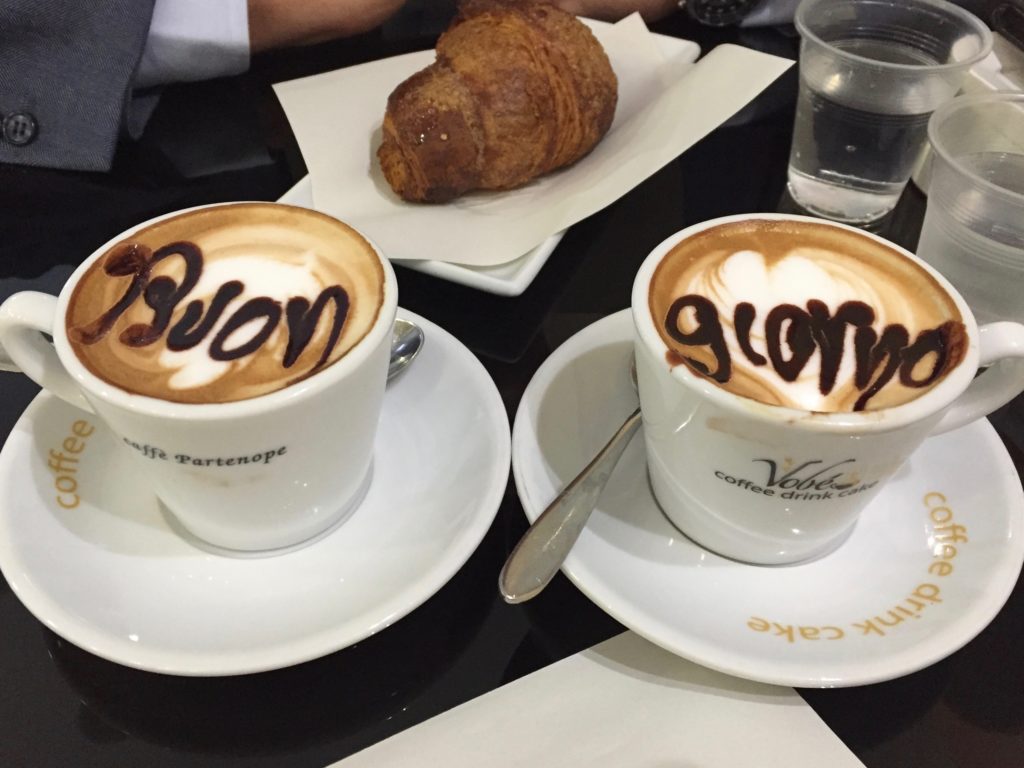
I arrived in Italy with pretty much a blank slate of knowledge. I didn’t grow up in an Italian-American family, therefore I had no foundation upon which to build more in-depth reference points. The “Italian” that I was aware of was always encountered in passing and went along the lines of John Gotti, Francesco Rinaldi and Benito Mussolini…rather than Totò Riina, Risorgimento and Hadrian. Of course this all changed once I found myself living in Rome and, with most passing days, I discovered that each had something to teach me.
A little bit into lockdown, I remember one day where there white sheets hanging from balconies. Soon enough, I learned that this was a nation-wide show of solidarity to mark the anniversary of one of Italy’s most gruesome mafia killings—the bombing in Capaci.
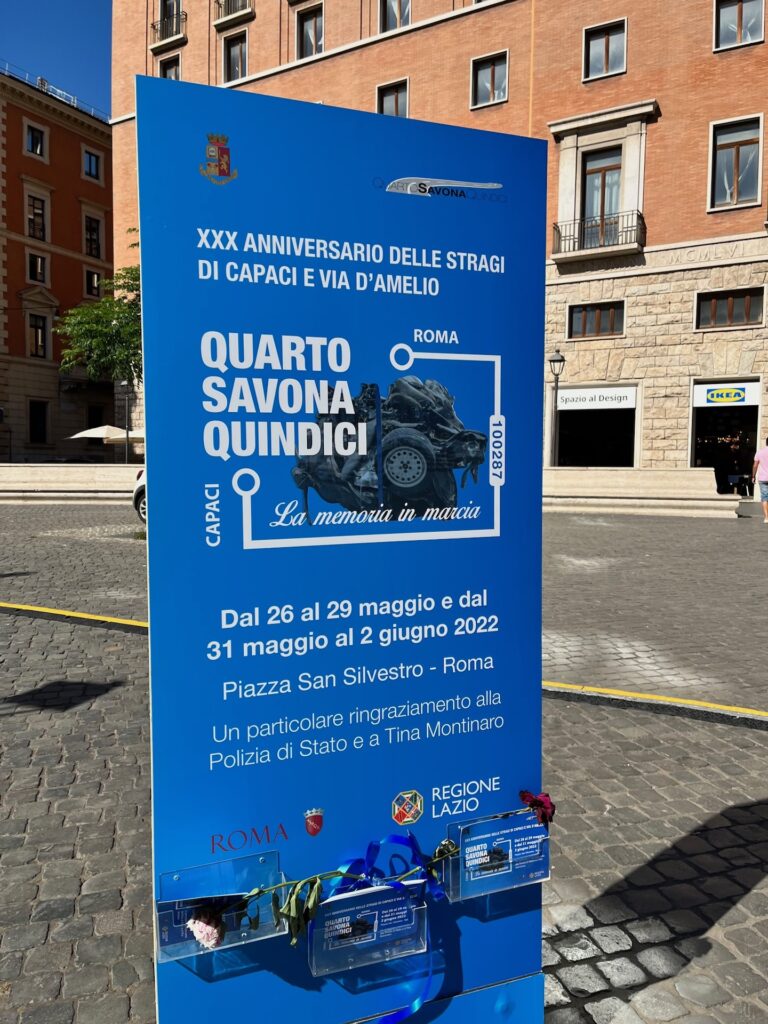
Now that I have been here a few years, it seems crazy to have to explain what happened in Capaci 30 years ago. It seems crazy because I am here, and this dark day is something that everybody knows about. On May 23rd, a Sicilian mafia family carried out the murder of anti-mafia magistrate Giovanni Falcone while he was traveling on the road back to Palermo, his hometown. His wife was in the car with him, the second in a procession of vehicles. The first vehicle was an armored Fiat Croma—this car bore the brunt of the blast: some 500kg of TNT placed under the highway and detonated once they passed by. Five people were murdered that day, to include Falcone and his wife.
To this day if you are driving in Palermo, you pass by a monument marking the spot where all of this happened. It doesn’t look like much of anything if you have no understanding of where you are and what went on back then. I remember when I first heard about this bombing, I ask a trusted Italian about it. He explained how much explosives were packed under the highway, and the incredible blast it created. “If you see the pictures, it looks like Beirut,” he told me with complete gravitas and no allowance for levity.
I did indeed look up the video footage of the aftermath, and was horrified by what I saw—I know we are seeing and hearing about a lot of horrific massacres as of late, but all I could think when I saw the Capaci bombing was Oh. My. God.
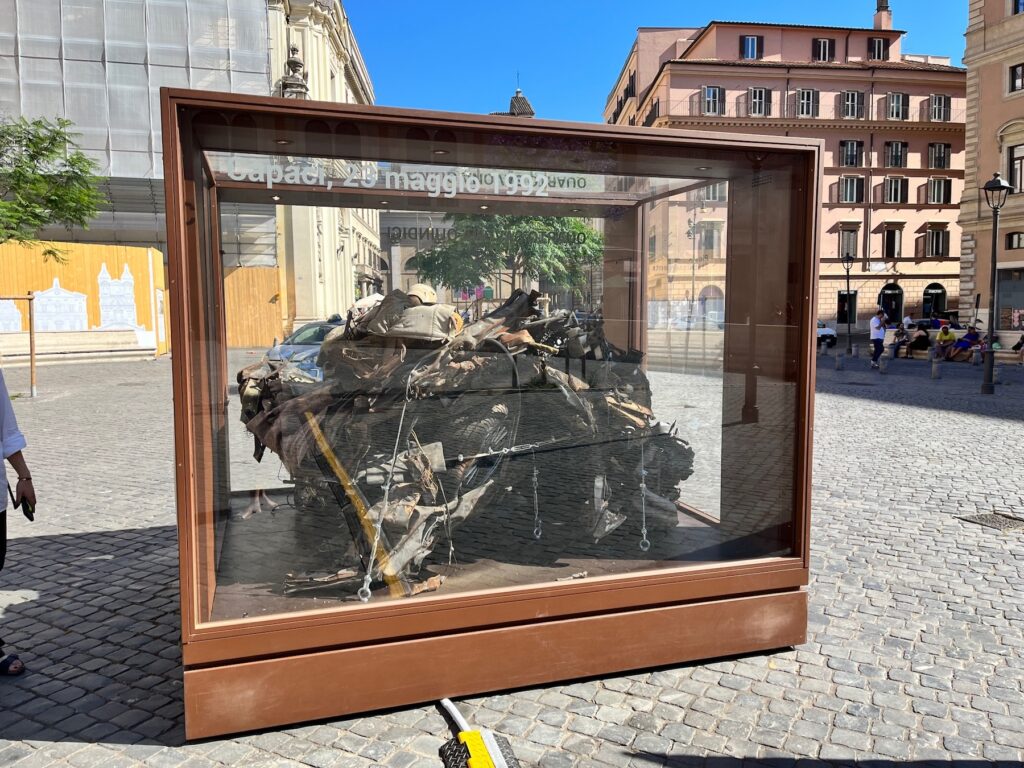
There are lot of easy things to ask Italians about, and almost always folks are super enthusiastic to discuss Italian culture. Like the best place to find water, or the high points for the region of origin. Or which soccer team they support. But as on outsider, a non-Italian, asking about the mafia is not something for polite conversation. On most occasions it is not appropriate- but if you can find someone who will speak about it, you learn that it is nothing like what an American might have grown up imagining. No glamorized Growing Up Gotti with bad eyebrows but rather nefarious ties that are not doing anyone any good. It’s not exactly a great thing for Italian culture that general knowledge of the mafia’s existence is well-known…but it does exist.
About two months after the Capaci bombing, Falcone’s close friend and fellow anti-mafia magistrate was murdered in Palermo on via d’Amelia—along with his military escorts. Both men were known for being kids who grew up together in Palermo and become strong and effective opponents of the Sicilian Mafia. Everyone in Italy knows about these two heroes, and I will admit that I have done a wholly incomplete and insufficient rendering of who they are, and what happened to them. I can tell you that each year the anniversaries of their murders are marked with solemnity. On this the 30th year of the bombings, it was announced that a 2-euro coin will be minted bearing the faces of Giovanni Falcone and Paolo Borsellino.
Soon after I learned about the Capaci bombing, I read that the remains of the first car in the procession, the Fiat Croma, had been preserved and is now a traveling exhibit. This, along with the words and efforts of the widows have become powerful rallying cries for anti-mafia measures. As Italy marks 30 years since these attacks, the Fiat was put on display here in Rome for several days. While I had seen photos of it in the past, I wanted to have a closer look.
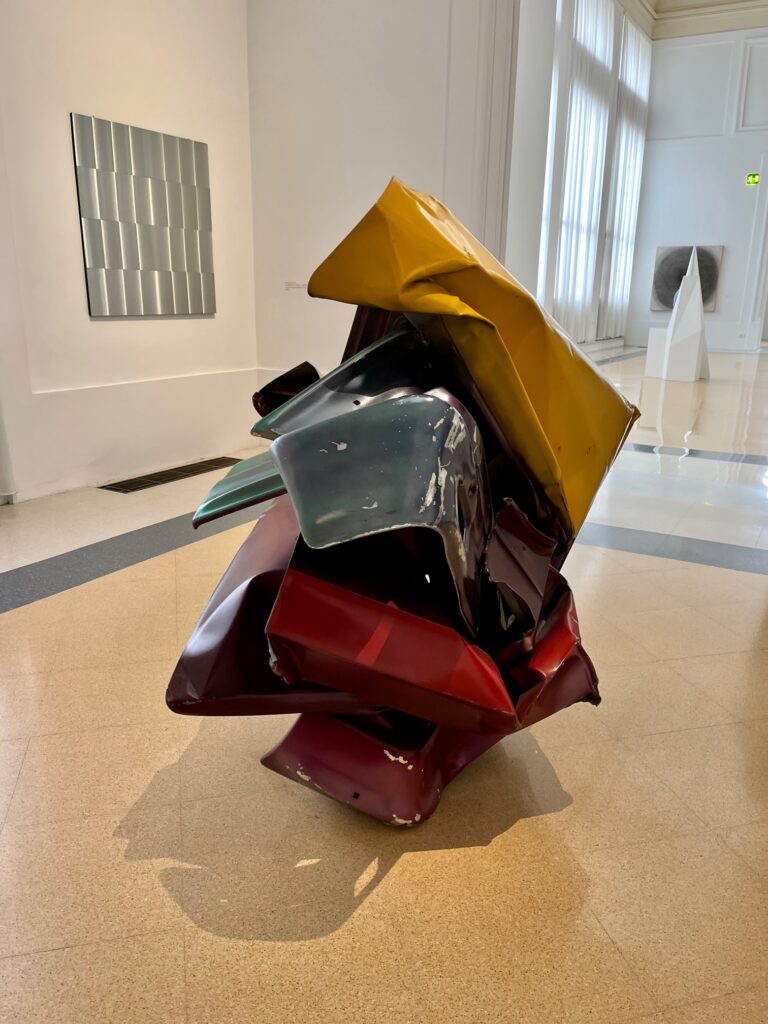
The escort car, codenamed Quarto Savona Quindici, would not be readily recognized as a car to a random pedestrian in Piazza San Silvestro. It looks more like a piece of modern art on display at the Galleria Nazionale d’Arte Moderna.
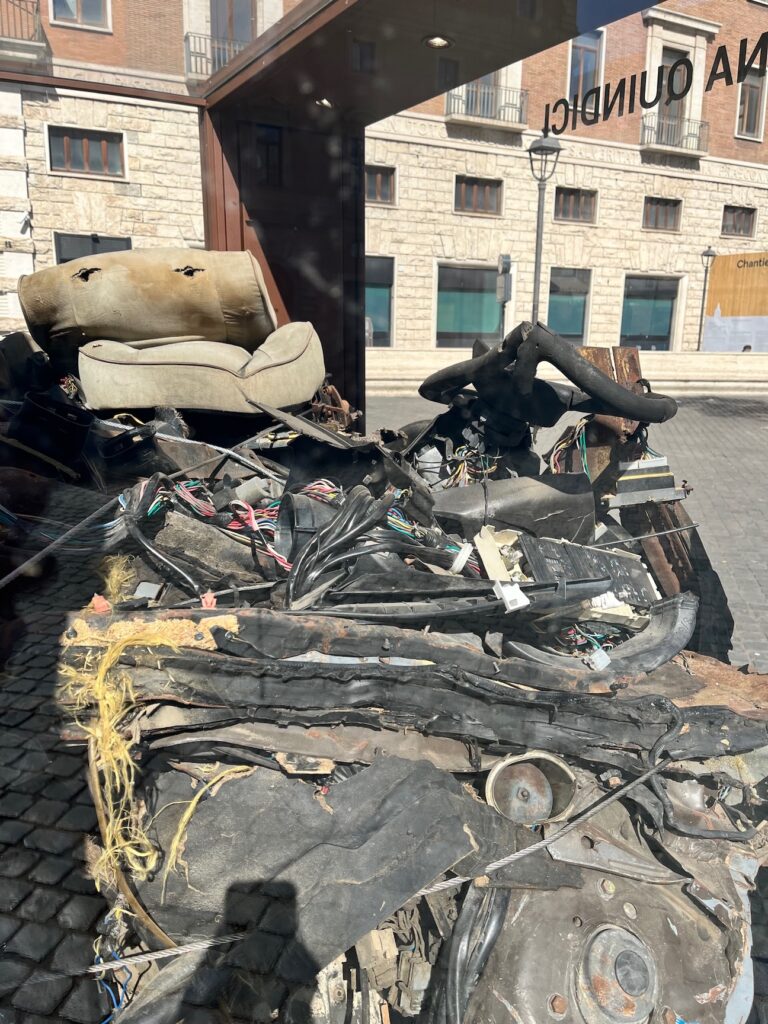
What remains of the car is something so compressed that you would think it came from a junkyard where everything was being compacted together for easy removal. There’s a single random wheel visible on one side and there are seats transformed into forever sandwiches when you step in for a closer look. Now, knowing what you know, you look at the Fiat and you imagine that there were people traveling inside. How the car went from moving down a highway to its final state is beyond words. Beyond comprehension.
It’s not the same thing exactly, but in looking at what remains of this car, I thought about Mamie Till Mobley, and the gut-wrenching decision she made to open the casket of her son Emmett. To show the world what was done to him. A wrong so unspeakable and perhaps nobody would believe or remember how horrible it was if it were not for the evidence left out in the light.
I’ll say it again that I am far from qualified to be making any type of commentary on the mafia in general—or indeed the thought process of a Black mother mourning the unspeakable murder of her 14-year-old son. But I do know that these images stay with us because they are unsettling. I remember how I felt in walking into the single room bearing Emmett Till’s empty coffin, a donation made to the African American History Museum in Washington, DC. These objects beg for systems to change. They beg for us to be active and ensure that such things become a thing of a pre-historic era. Now we are supposed to know better. Be better. My God.
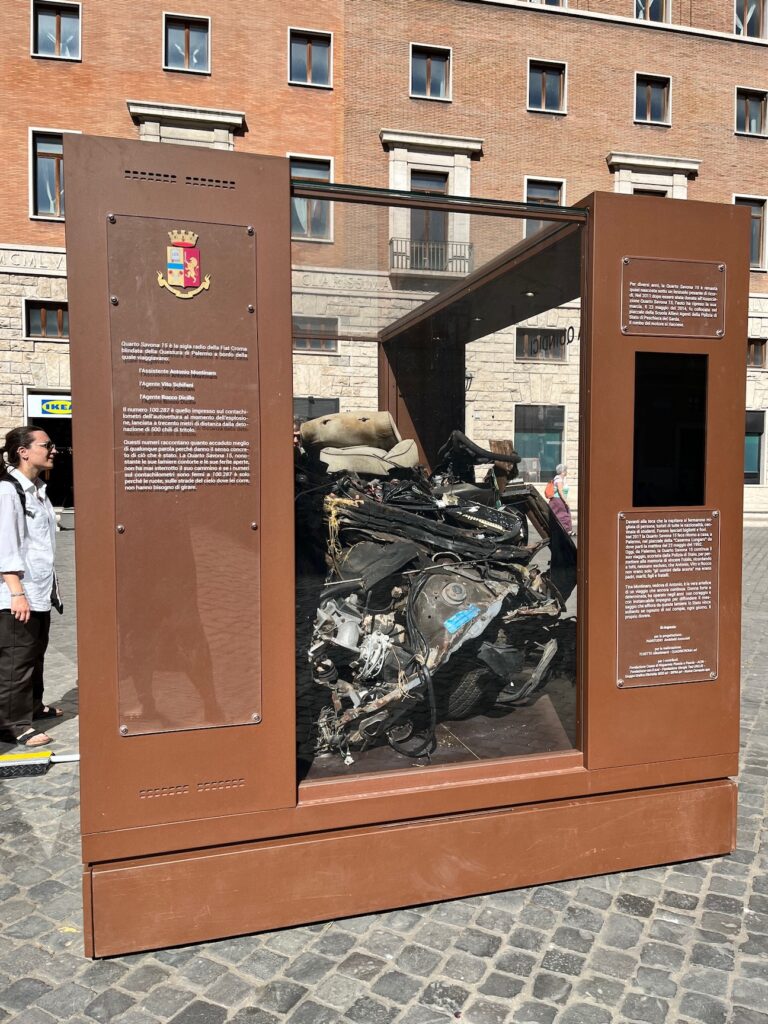
There are plenty more examples out there that could be named or even compared when we read about the traveling display of the Fiat Croma. Plenty of local-here-in-Italy examples, as well as those back in my home of America. It’s important to keep learning and to bear these in mind—even if they are hard to see. I know that I’ll continue building upon my knowledge for all things Italian—but for this single moment I felt it was important to pay witness for this less glossy, yet incredibly important bookmark in Italy’s history and culture.